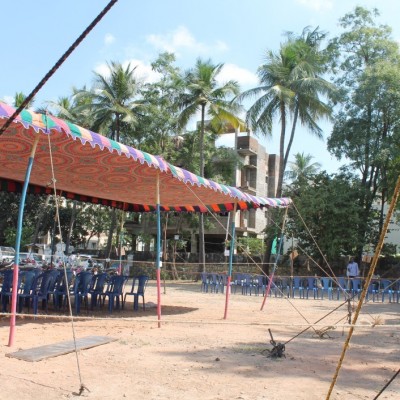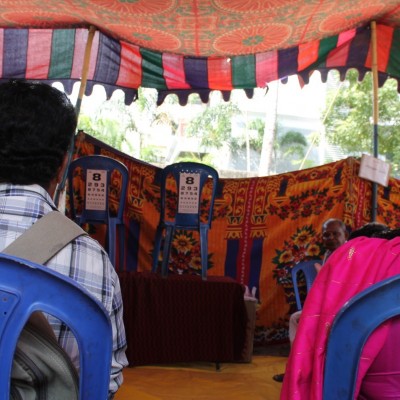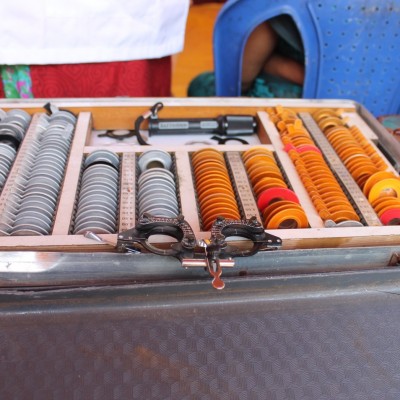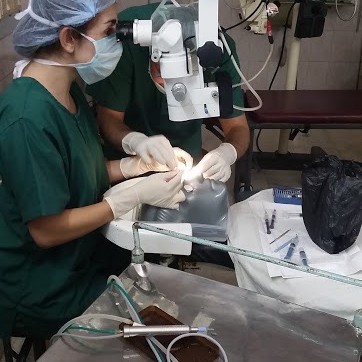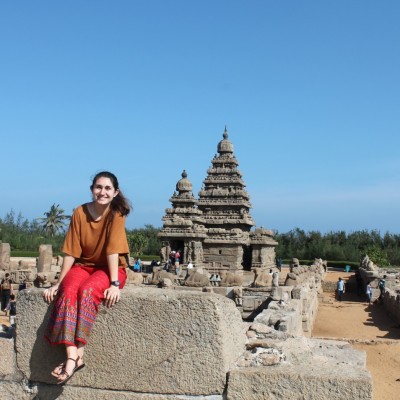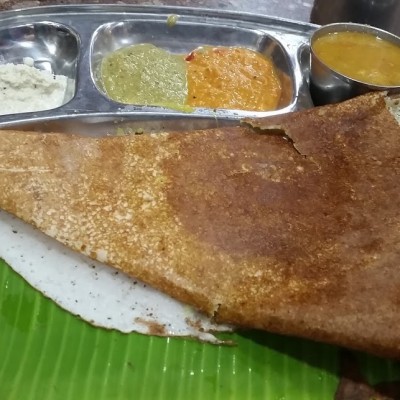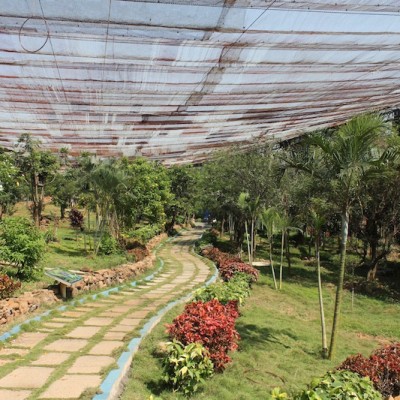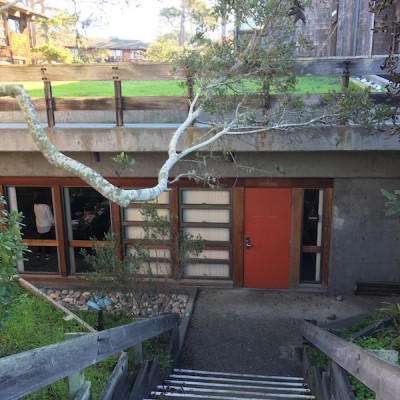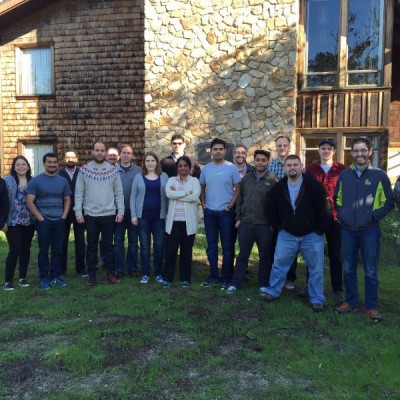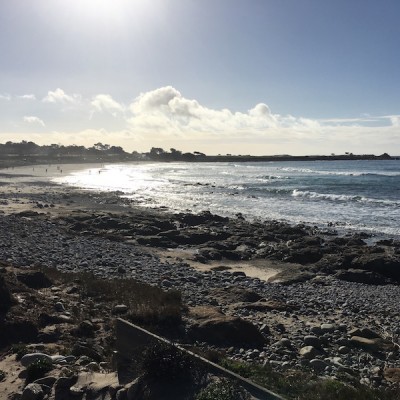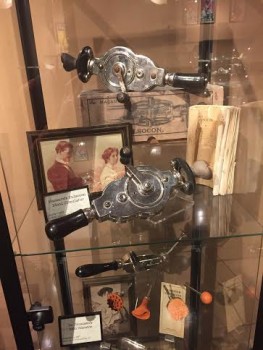
An antique vibrator. Photo taken by Brett Christensen in the Antique Vibrator Museum within the Good Vibrations sex shop in San Francisco, CA.
The following post is by Brett Christensen ’16. Christensen used part of his AMS grant to explore the idea of “positive sexuality” in San Francisco, CA.
Many of us probably experienced a fairly underwhelming sex ed class at some point during high school. The one where you learn how to put a condom on a banana, the developmental stages associated with the growth of pubic hair, and the names of some really horrifying STDs and STIs. But sex – whether we engage in it or not – is central to many of our lives’, and there’s a lot that gets left out when sex ed is just a 2-week unit in a Health course. What’s a vagina like, and what are its parts? If I have no desire to engage in sex, is there something wrong with me? Why is there such a taboo around sex? What does affirmative consent look like?
Coming to Colgate opened a lot of doors for me, and one of those doors led to the exploration of human sexuality. I participated in Yes Means Yes and Yes Means Yes 2.0 (“positive sexuality” seminars), Bystander Intervention training (to help with the identification and prevention of sexual assault), This Is Not a Play About Sex (an activist play that portrays some real-life sentiments around issues of sex and gender at Colgate), and, admittedly to a lesser degree, Lambda (an anonymous group of students who identify with the LGBTQ+ community). From my involvement with these groups, as well as casual conversations with friends about sex, I realized that I wanted to continue to learn about sex and sexuality for the foreseeable future. And that’s where my AMS grant comes in.
While thinking about how I would use the remaining money in my grant fund, I decided it would be interesting and productive to see how “positive sexuality,” a phrase I’ve now come to see as nuanced and complicated in ways I did not understand prior to this AMS project, played out in groups typically considered to be “sex positive.” The first place that came to mind was San Francisco, as it was the site of the sexual revolution of the 1960s and 1970s, and continues today to be perceived as a hub of sex culture (a perception verified by some of my relatives who, upon hearing about my project, exclaimed, “Well, that’s the place to do it!”). I narrowed my general interests down to exploring how individuals from groups or communities typically perceived as sex positive talked about sex positivity, and how they saw their jobs or volunteer commitments as contributing to a more sex positive world.
Having this focus, I decided to begin reaching out to three general groups of people who I could meet with while in San Francisco (SF). First, I reached out to people involved with non-profits who held sex positivity, either explicitly or implicitly, as part of their mission statements. Second, I reached out to sex therapists in the SF area. Finally, I added in a representative from a feminist sex shop, Good Vibrations, as recommended to me by Professor of Sociology and Women’s Studies, Meika Loe. Understandably, the majority of email inquiries I sent out did not receive a response, but every response I did receive made me very excited.
From the time I touched down at San Francisco International Airport to the time I would begin my flight back to Syracuse was just under six days, so I began my meetings early in the trip and did my best to tie in some time to get a feel for the city. My first meeting was with a representative from San Francisco Sex Information (SFSI), a non-profit made up entirely of volunteers and geared toward providing accurate and non-judgmental information about sex and sexuality. They achieve this mission primarily through offering biannual intensive training sessions attended by therapists, school teachers, nurses, positive sexuality advocates, and others. Our meeting spot, Wicked Grounds, was all too appropriate: a kink café and boutique. Surrounded by artistic renditions and photographs of kink-related activities, we discussed the care taken by SFSI as an organization to promote a very specific kind of sex-positivity. In fact, “promote” is probably not the verb that the volunteers at SFSI would use. They emphasize that the creation of space in which all individuals – those who love sex and love talking about sex (the traditionally-conceived “sex positive” people), those who have been traumatized so as to have an infinitely complicated relationship with sex, those whose relationship with sex is complicated for other reasons, those who have no relationship with sex at all, by choice or otherwise, and anyone else – feel that they can access the information they want and need is of the utmost importance.
This was a pivotal point in the development of my understanding of sex and sexuality. While I had always understood that some people may not want to engage in sex or in discussions about sex, I always took this understanding to be within the confines of my idea of sex positivity. And maybe that is the case; maybe what we need to be careful of is making sure that “sex positivity” is understood broadly, so that it can accommodate everyone, no matter what their relationship with sex is, if they even have one. So while this new understanding wasn’t pivotal in the sense that it radically changed any of my beliefs, it did force me to reconsider my ideas about sex positivity so that it now rests on a framework that prioritizes inclusivity above all else, rather than as merely one of many considerations. Anyways, since this meeting was my first, these new thoughts framed the remainder of my project.
I next met with a sex therapist from Erwan Davon Teachings. Their practice offers multiple courses, although the first and foundational one is titled “The Pleasure Course.” Their clients tend to be white, affluent, heterosexual partners – a fact that almost certainly reflects the perhaps problematic realities of our society more than it does any sort of active desires to serve specific identities by those who work at Erwan Davon Teachings. But that’s just a musing of mine; I’ll leave it to sociologists to figure it out. An aspect of sex positivity that really stood out to me here, though, was the building of community. Community-building has been central in my own exploration of positive sexuality, and the clients at this practice exemplified it. Coming together once a week to engage in discussion and practice related to sex, attending informal cocktail parties about once per month, and having a connection based in learning – about something central to many of our lives – manifested in a community of happy, engaged people which I was lucky enough to observe during one of their weekly classes.
Another sex therapist I met with made it clear to me that the sex therapy world was about as diverse as it could be. Whereas Erwan Davon Teachings seemed to hold community-building in a very clear way to be of the utmost importance, McGrath Somatic Sex Therapy was focused more individually. An interesting similarity is that both emphasize hands-on work with or between clients, as well as the spiritual component of sexuality. Elizabeth McGrath had a deep passion for marginalized identities, and seemed most proud of her work with those with disability identities, fetishes, queer identities, and more. And while her work wasn’t explicitly community-focused in the sense of creating community among her clientele, she was very conscious of connecting people in marginalized communities to each other and to resources outside of her practice. At this point in my trip, the notion of community building as central to the work toward a sex positive world achieved prominence equal to my new understanding of sex positivity as heavily nuanced.
Something that often works against the movement for sex positivity, I think, is the narrowly conceived perception of sex as dirty or unsafe. I think, perhaps contentiously, that this perception is sometimes exacerbated by the fact that sex shops and the porn industry are spaces inhabited by people who are not sex positive, or at least are confused about sex positivity. But this statement does not apply to all areas of these industries, and my meeting with a representative from Good Vibrations exemplifies that. Good Vibrations is unique because it is a feminist sex shop run by workers who undergo over 40 hours of education and training. The mission in Good Vibrations is intricately tied up in that of SFSI, because both seek to provide accurate and non-judgmental information about sex. SFSI accomplishes this on a broad scale, by offering general trainings that cover various topics, while also providing email inquiry services. Good Vibrations provides those who want to explore their sexuality with the aid of toys and other material items the means to do so.
During every meeting I had, I asked for opinions or comments on the state of sex education in our country. Responses differed slightly in emphasis, but all contained a troubling note of cynicism: the politics of sex and sexuality are so tied up in individual value systems that sex positive education in, say, public schools is a long way off. Fortunately, this hopelessness was countered by faith in the growth of small communities in which discussion of human sexuality can occur critically and inclusively. I’m so grateful for the opportunity that this AMS grant provided me with, and I can’t thank enough Peter Tschirhart, Rob Nemes, Meika Loe, and Christina Khan for their help and support throughout. As someone interested in pursuing a career in education, movements of inclusivity and community excite me, and my views on education, learning, community, and of course, positive sexuality have been deeply influenced by this project. And even though the themes of this project don’t fit neatly into either my biophysics or my philosophy major, it has contributed to my interdisciplinary understanding of the world.



